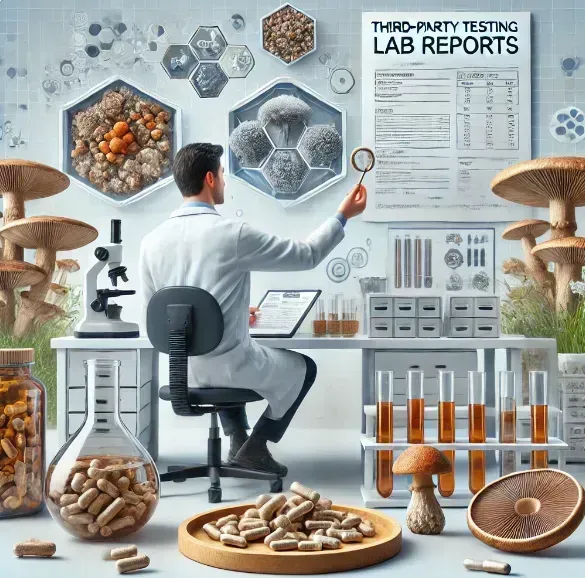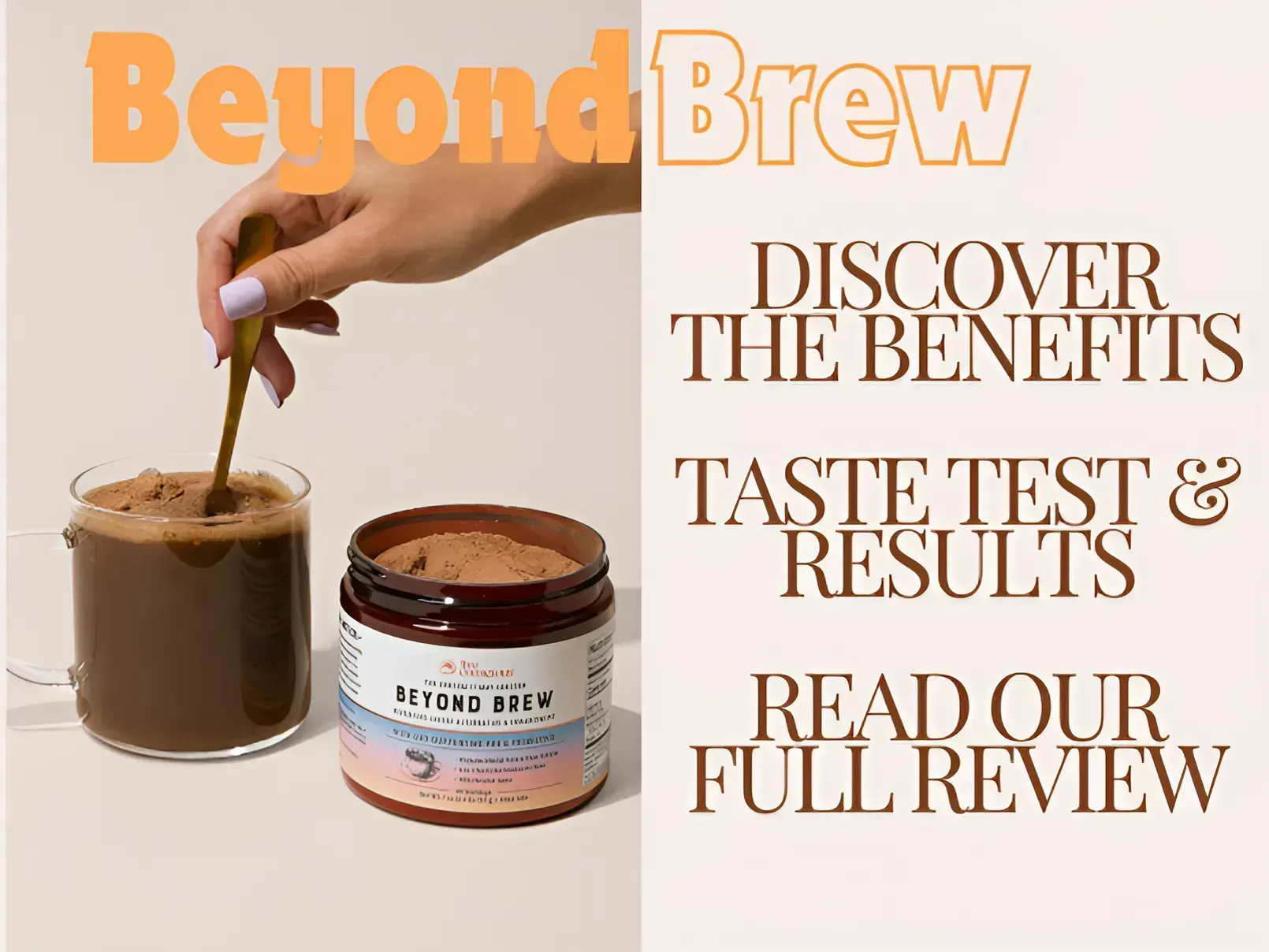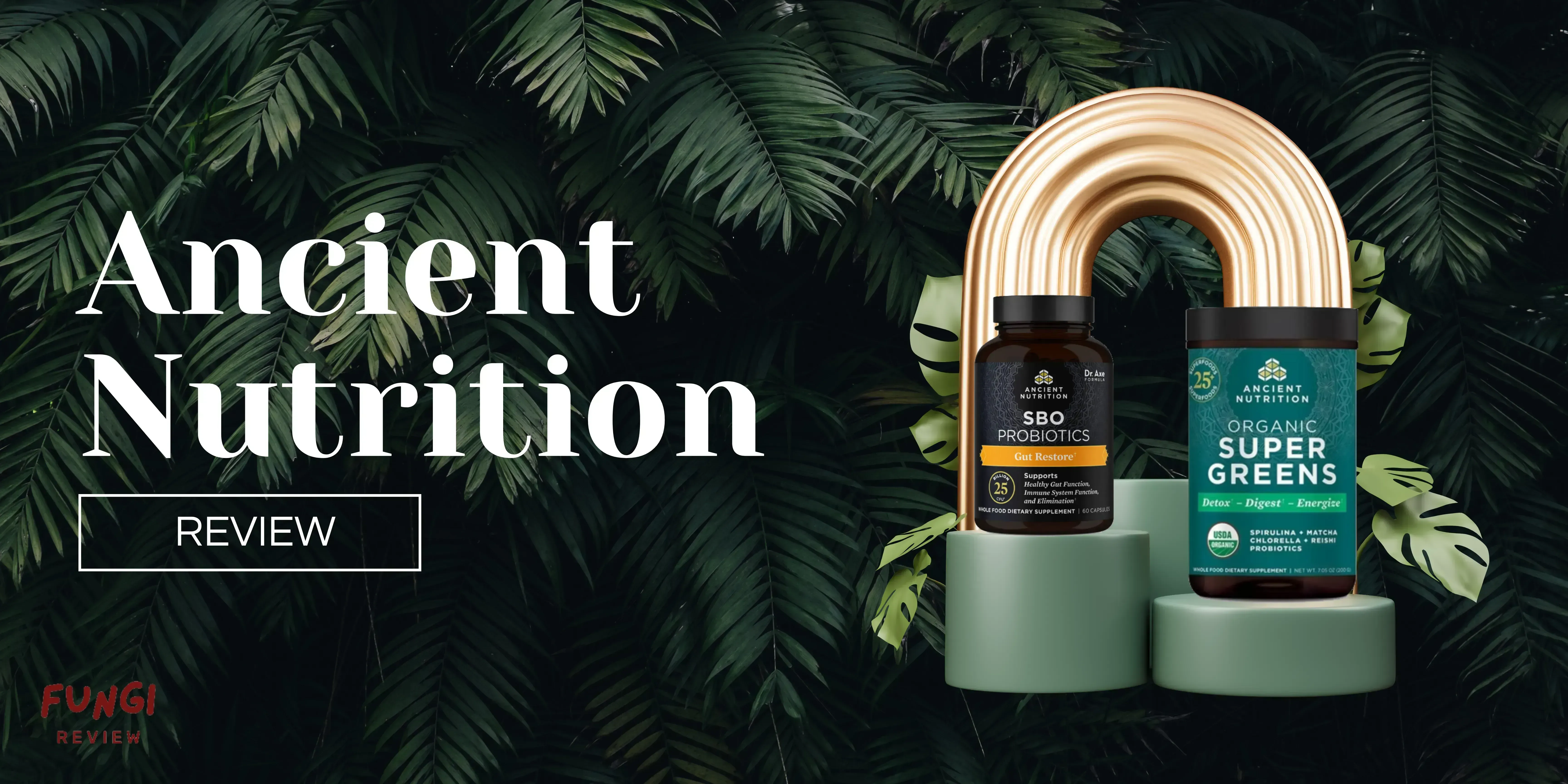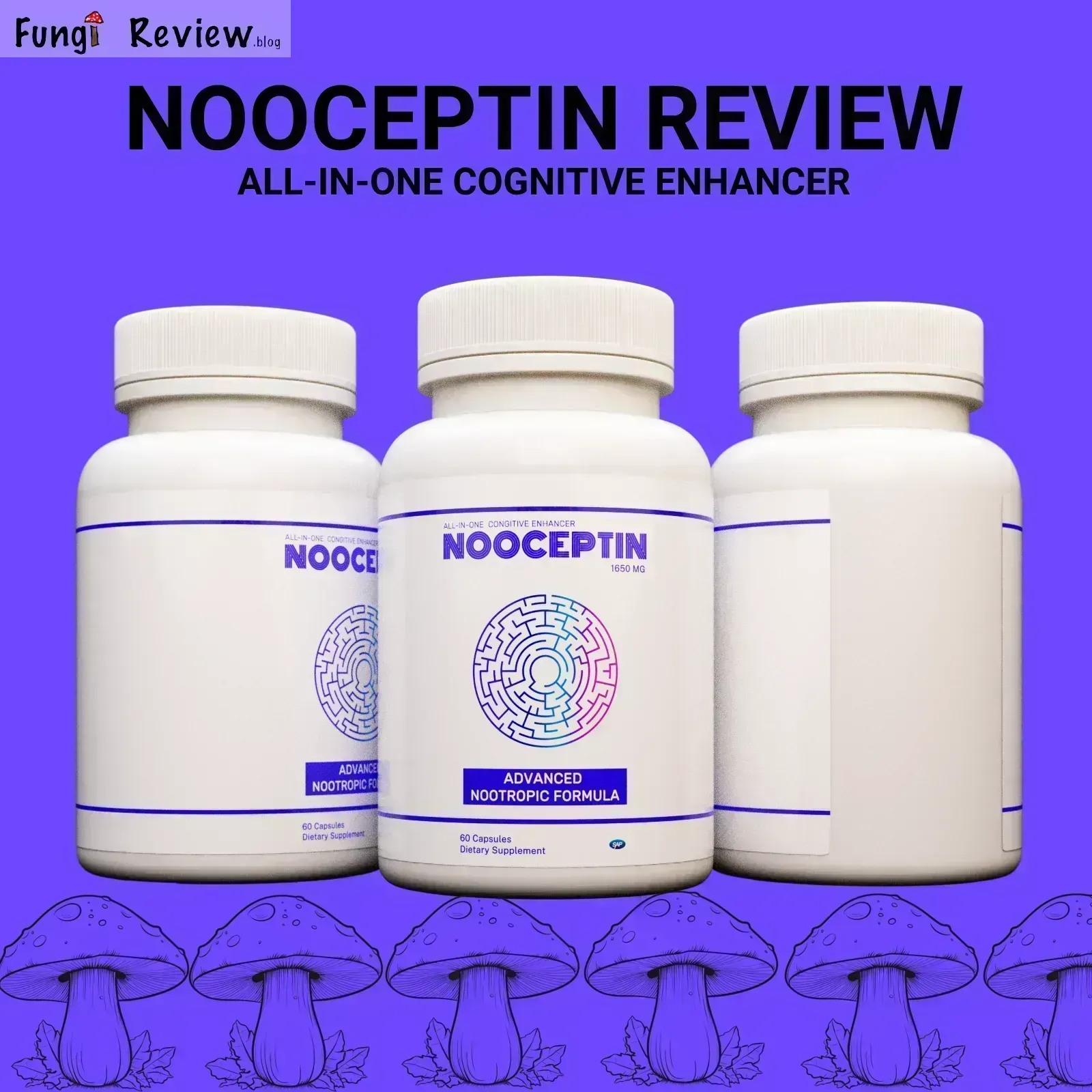In the world of mushroom supplements, quality and safety are extremely important. With the growing popularity of mushrooms for their potential health benefits, it’s become increasingly important for consumers to understand what they are putting into their bodies. Lab reports are a critical tool in assessing the quality of mushroom products, providing detailed information about the presence of beneficial compounds as well as potentially harmful contaminants. However, these reports can often be complex and filled with scientific jargon that can be intimidating to the average consumer. In this Fungi Review, our goal is to guide and break down the essential components of lab reports, explain their significance, and provide practical advice on how to use them to choose the best mushroom products.
Why Lab Reports Matter
Lab reports are the gold standard for verifying the quality and safety of mushroom supplements. They offer an objective analysis conducted by third-party laboratories, ensuring that the product contains the compounds it claims to and is free from harmful contaminants. As the mushroom supplement industry is not tightly regulated, lab reports provide transparency and accountability, helping consumers make informed decisions.
Key Components of a Lab Report
When reviewing a lab report for a mushroom product, there are several key components to focus on:
- Identification of Bio-Active Compounds
- Beta-Glucans: These are the primary active compounds in mushrooms that contribute to their immune-boosting properties. The concentration of beta-glucans should be clearly listed on the lab report. A higher percentage of beta-glucans typically indicates a more potent product.
- Triterpenes: Found in mushrooms like Reishi, triterpenes have anti-inflammatory and anti-cancer properties. The presence and concentration of triterpenes are important indicators of the quality of Reishi supplements.
- Cordycepin: This compound is specific to Cordyceps mushrooms and is known for its potential to enhance energy and endurance. The lab report should specify the amount of cordycepin present in the product.
- Contaminant Analysis
- Heavy Metals: Mushrooms are natural bioaccumulators, meaning they can absorb heavy metals from the soil in which they grow. Lab reports should test for heavy metals such as lead, arsenic, cadmium, and mercury. The levels of these metals should be below the safety thresholds set by regulatory bodies.
- Pesticides and Herbicides: If the mushrooms are not certified organic, the lab report should test for residual pesticides and herbicides. Even organic mushrooms can sometimes be exposed to these chemicals, so it’s important to check for their absence.
- Microbial Contaminants: This includes bacteria, yeasts, and molds that can contaminate mushroom products during the cultivation or processing stages. The lab report should indicate that the product is free from harmful microbial contamination.
- Moisture Content and Water Activity
- Moisture Content: High moisture content in mushroom products can lead to mold growth and spoilage. The lab report should include the moisture content, which should be within acceptable limits to ensure the product's shelf life and safety.
- Water Activity (Aw): This is a measure of the available water in the product, which can influence microbial growth. Lower water activity levels generally indicate a longer shelf life and reduced risk of spoilage.
- Product Purity and Fillers
- Fillers and Additives: Some mushroom products contain fillers or additives that can dilute the potency of the active compounds (For example, some mushroom gummies and chocolates). A good lab report will test for the presence of such substances and confirm the purity of the product.
How to Interpret Lab Report Results
Understanding the data presented in a lab report is crucial for determining the quality of a mushroom product. Here’s a step-by-step guide to interpreting these reports:
Step 1: Verify the Lab's Accreditation
Before diving into the details of the report, it’s important to verify that the testing laboratory is accredited by a recognized body, such as ISO (International Organization for Standardization). ISO-17025 is a common accreditation for testing labs, indicating that the lab follows stringent quality control procedures and produces reliable results.
Step 2: Check the Identification of Active Compounds
Look for the presence and concentration of key bio-active compounds like beta-glucans, triterpenes, and cordycepin. These should be listed in percentages or milligrams per serving. Compare these values with the claims made on the product label. If the lab report indicates lower levels of these compounds than advertised, it may be a sign of a lower-quality product.
For example, a high-quality Reishi supplement should contain a significant percentage of triterpenes, ideally around 2-5%. If the lab report shows a lower concentration, the product may not be as effective as claimed.
Step 3: Assess the Contaminant Levels
Heavy metals, pesticides, and microbial contaminants should be listed with their corresponding levels in the product. These levels should be below the maximum limits set by regulatory agencies, such as the FDA or the European Union. If the lab report shows levels close to or exceeding these limits, the product may pose a health risk.
For instance, lead levels should typically be below 0.5 parts per million (ppm) in dietary supplements. If a lab report shows higher levels, it’s advisable to avoid that product.
Step 4: Evaluate the Moisture Content and Water Activity
Ensure that the moisture content is within acceptable ranges, usually below 10%. High moisture content can lead to mold growth, even if the product is stored properly. The water activity should also be low, typically below 0.6, to inhibit microbial growth and ensure a longer shelf life.
Step 5: Review the Product Purity
The lab report should confirm that the product is free from unnecessary fillers and additives. Pure mushroom products are more potent and provide better health benefits. If fillers are present, they should be listed in the report, allowing you to make an informed decision about whether the product meets your standards.
Common Issues Found in Lab Reports
While lab reports are an invaluable resource, they can sometimes reveal issues with the product that may not be immediately apparent. Here are some common issues to watch out for:
Low Levels of Active Compounds
One of the most disappointing findings in a lab report is a low concentration of active compounds. This can happen for several reasons, including poor quality raw materials, inadequate extraction methods, or improper storage. If a lab report shows low levels of key compounds like beta-glucans or cordycepin, the product may not be worth purchasing.
Presence of Contaminants
Heavy metal contamination is a serious concern with mushroom supplements, particularly if the mushrooms are grown in polluted environments. Lab reports that show even trace amounts of heavy metals should be approached with caution. While small amounts might not pose an immediate risk, long-term exposure can lead to serious health problems. It is important that the brands present lab reports that show if their mushrooms contain lab reports and if it follows FDA regulations.
Similarly, the presence of pesticides or microbial contaminants indicates that the product was not processed or stored properly. Such products should be avoided, especially if there are safer, cleaner alternatives available.
High Moisture Content
High moisture content is a red flag for potential spoilage. Products with moisture content above the recommended levels are at risk of developing mold or other microbial contaminants, which can render the product unsafe for consumption. If a lab report shows high moisture levels, it’s a sign that the product may not have been dried or stored properly.
How to Use Lab Reports to Choose the Best Mushroom Products
Now that you understand how to read and interpret lab reports, here’s how you can use this knowledge to choose the best mushroom supplements:
Step 1: Research and Shortlist Brands
Start by researching mushroom supplement brands that provide lab reports for their products. Brands that are transparent about their testing and readily provide lab reports are more likely to produce high-quality supplements. Shortlist these brands and focus your attention on them.
Step 2: Request Lab Reports
If the lab report is not readily available on the brand’s website, don’t hesitate to reach out and request it. Reputable companies should have no problem providing this information. If a brand is reluctant or refuses to share lab reports, consider it a warning sign and move on to other options.
Step 3: Compare Lab Results
Once you have lab reports from multiple brands, compare the results. Look at the levels of active compounds, the presence of contaminants, and other key factors like moisture content and product purity. This comparison will help you identify which brands offer the highest quality products.
Step 4: Consider the Overall Value
When evaluating the lab report, consider the overall value of the product. A high concentration of active compounds combined with low levels of contaminants is the ideal scenario. While such products may be more expensive, they are likely to offer better health benefits and pose fewer risks.
Step 5: Make an Informed Decision
Finally, use the lab report data to make an informed decision. Choose the product that best meets your needs in terms of potency, safety, and overall quality. Remember, investing in a high-quality product is an investment in your health.
The Role of Third-Party Labs
Third-party labs play a crucial role in ensuring the quality and safety of mushroom supplements. These labs are independent entities that provide unbiased testing services, ensuring that the results are not influenced by the interests of the product manufacturer.
Leading Third-Party Labs
Some of the most reputable third-party labs in the industry include ACS Laboratory and Scout Scientific. These labs specialize in testing natural products, including mushrooms, and provide detailed reports on the presence of bio-active compounds, contaminants, and other important factors.
- ACS Laboratory: Known for its comprehensive testing services, ACS Laboratory offers a wide range of tests for mushroom supplements, including heavy metal analysis, pesticide screening, and potency testing for bio-active compounds like beta-glucans and triterpenes. Their reports are detailed and easy to understand, making them a valuable resource for consumers.
- Scout Scientific: Specializing in natural product testing, Scout Scientific offers services tailored specifically for mushroom supplements. They provide detailed analysis of bio-active compounds like beta-glucans and cordycepin, as well as rigorous contaminant testing. Their reports are designed to be user-friendly, with clear explanations of what the results mean for consumers.
Conclusion: Empowering Consumers Through Knowledge
Understanding lab reports is an essential skill for anyone looking to navigate the complex world of mushroom supplements. By focusing on key indicators like the concentration of bio-active compounds, the presence of contaminants, and overall product purity, you can make informed decisions that prioritize your health and well-being.
At Fungi Review, our mission is to empower you with the knowledge you need to choose the best products on the market. We encourage you to use this guide as a reference when evaluating mushroom supplements and to always insist on transparency from the brands you trust. By doing so, you’ll be able to enjoy the full benefits that high-quality mushroom products have to offer.
For more detailed insights on how to evaluate specific aspects of mushroom products, be sure to check out our other blogs in the Mushroom Quality Guide series, where we dive deeper into topics like understanding lab reports, the differences between fruiting body and mycelium, and how to identify trustworthy mushroom brands.
Related Blogs:
- The Ultimate Mushroom Product Checklist: A practical guide to evaluating mushroom products.
- Fruiting Body vs. Mycelium: What’s the Difference?: Understand the key differences and which might be better for you.
- Mycelium on Grain: What You Need to Know: Learn about the implications of grain-based mycelium in mushroom supplements.
- How to Identify Trustworthy Mushroom Brands: Tips and tricks for finding brands that you can trust.
Fungi Review's goal is to equip our audiences with knowledge on mushrooms so you can confidently navigate the mushroom supplement market and choose products that truly deliver on their promises and ensure your safety.
Citations: (Read these citations for more thorough research and info)
-
Testing for Active Compounds in Mushrooms:
- Source: Wasser, S. P. (2002). Medicinal mushrooms as a source of antitumor and immunomodulating polysaccharides. Applied Microbiology and Biotechnology, 60(3), 258-274. Link
-
Beta-Glucan Quantification in Mushroom Products:
- Source: Volman, J. J., Ramakers, J. D., & Plat, J. (2008). Dietary modulation of immune function by beta-glucans. Physiology & Behavior, 94(2), 276-284. Link
-
Heavy Metal Contamination in Mushroom Supplements:
- Source: Kalac, P. (2010). Trace element contents in European species of wild growing edible mushrooms: A review for the period 2000-2009. Food Chemistry, 122(1), 2-15. Link
-
Mycotoxin Testing in Mushroom Products:
- Source: Patel, S. (2016). Functional Food Supplements for Prevention and Treatment of Liver Diseases: A Focus on Hepatoprotective Agents. BioMed Research International, 2016, 7582454. Link
-
Standardization and Quality Control of Mushroom Extracts:
- Source: Yang, B. K., Kim, D. H., Jeong, S. C., Das, S., Choi, Y. S., Shin, J. S., & Lee, S. C. (2007). Hypoglycemic effect of a Lentinus edodes exo-polymer produced from a submerged mycelial culture. Bioscience, Biotechnology, and Biochemistry, 71(3), 566-573. Link
-
Evaluating the Bioavailability of Mushroom Compounds:
- Source: Friedman, M. (2016). Mushroom Polysaccharides: Chemistry and Antitumor Activity. Journal of Agricultural and Food Chemistry, 64(18), 3926-3938. Link
-
Safety and Toxicity Assessments of Mushroom Supplements:
- Source: Ooi, V. E., & Liu, F. (2000). Immunomodulation and anti-cancer activity of polysaccharide-protein complexes. Current Medicinal Chemistry, 7(7), 715-729. Link
-
Analyzing Polysaccharide Content in Mushroom Products:
- Source: Zhang, M., Cui, S. W., Cheung, P. C., & Wang, Q. (2007). Antitumor polysaccharides from mushrooms: a review. Carbohydrate Polymers, 70(4), 349-362. Link
-
Third-Party Testing for Mushroom Product Quality:
- Source: Lee, W. F., Liang, J. Y., Wu, S. C., & Liu, S. Y. (2007). Evaluation of the biological activity of polysaccharides from medicinal plants. Planta Medica, 73(7), 645-651. Link
-
Detecting Contaminants in Mushroom Supplements:
- Source: Yap, Y. Y., & Ng, M. L. (2001). Growth inhibition of cultured human cancer cells by Lentinula edodes (Shiitake) mushroom-derived polysaccharide-protein complex: Role of betaglucan content and chain conformation. International Journal of Molecular Medicine, 8(6), 663-668. Link





